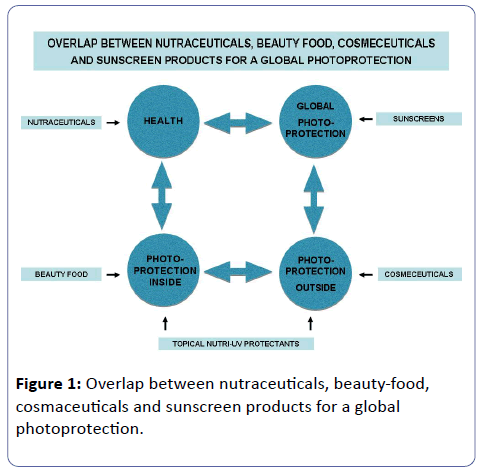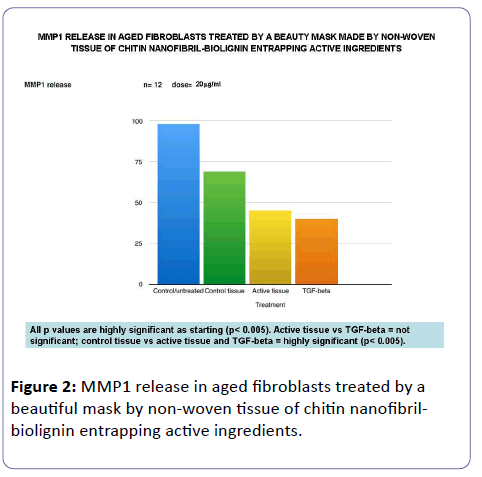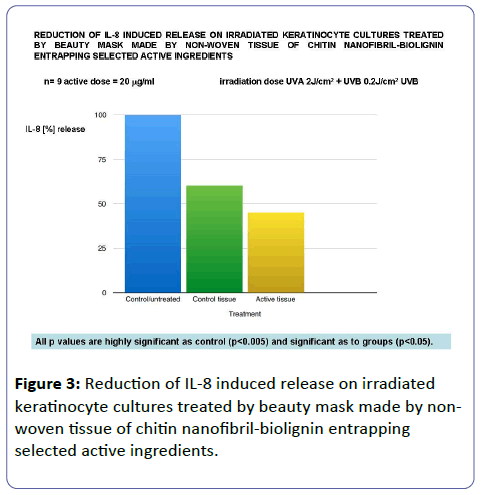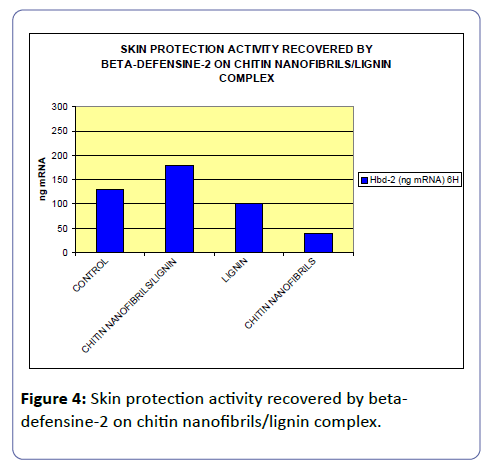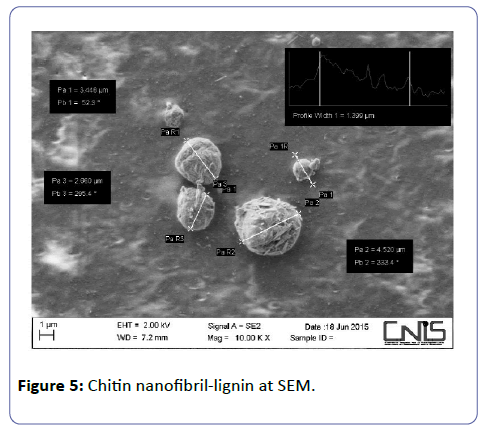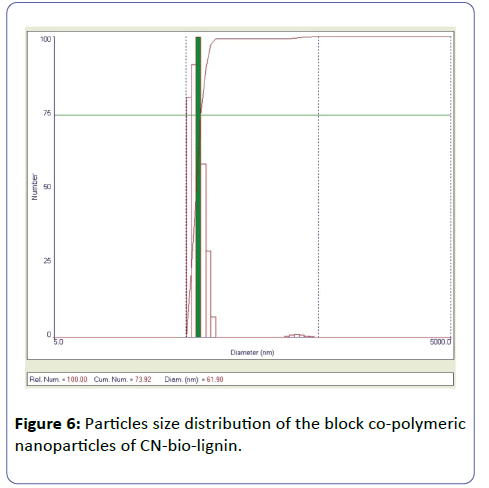Nanotechnology and Photoprotection from Within Out
Pierfrancesco Morganti
Pierfrancesco Morganti*
Dermatol Institute, 2nd University, Naples, Italy
- *Corresponding Author:
- Morganti P
Professor of Skin Pharmacology and Applied
Cosmetic Chemistry, Dermatol Institute
2nd University, Naples, Italy
Tel: 0039 33512 55 155
E-mail: info@iscd.it
Received date: Jun 13, 2016; Accepted date: Oct 20, 2016; Published date: Oct 22, 2016
Citation: Morganti P. Nanotechnology and Photoprotection From Within Out. 2016; 1:3.
Abstract
Excessive exposure to ultraviolet radiation (UV) leads to Development of various skin disorders, such as erythema and hyperpigmentation. Both UVA and UVB rays induce adverse biological effects, including DNA damage, oxidative stress, free radical production, photoaging and skin cancer [1]. Moreover, infrared radiation (IRA) contributes to photoaging by upregulating MMP1 expression in dermal fibroblast [2]. To obtain a more stable and broader photoprotective activity it seems necessary to combine topical and endogenous photoprotection by the combined use of sunscreen emulsions and specific nutraceuticals [3]
Introduction
Excessive exposure to ultraviolet radiation (UV) leads to Development of various skin disorders, such as erythema and hyperpigmentation. Both UVA and UVB rays induce adverse biological effects, including DNA damage, oxidative stress, free radical production, photoaging and skin cancer [1]. Moreover, infrared radiation (IRA) contributes to photoaging by upregulating MMP1 expression in dermal fibroblast [2]. To obtain a more stable and broader photoprotective activity it seems necessary to combine topical and endogenous photoprotection by the combined use of sunscreen emulsions and specific nutraceuticals [3] (Figure 1).
At this purpose and according to our in progress studies, our group has realized block co-polymeric nanoparticles based on the use of Chitin Nanofibrils (CN) and Lignin (LG), obtained from the crustacean waste and plant biomass respectively [4-6]. The use of these by-products is in accordance to the EU, UNEP and OECD programmes [7-9], necessary to safeguard the precious natural raw materials for the incoming generations and maintain the biodiversity of our planet.
Activities of Nano chitin and Lignin
Nanochitin (Chitin Nanofibrils) has shown to modulate the interleukins activity, slowing down the inflammatory processes, and to normalize the keratinocytes turnover [10,11]. On the other hand lignin has shown to possesses antioxidant, antimicrobial and antimutagenic activities [12] as well as to have a sun blocker effectiveness, notably increasing the UVA and UVB absorbance, when used as ingredient for sunscreen formulations [13].
By a study in progress, these micro/nano particles of CN-LG, produced by gelation method and spray dried, have shown an interesting antioxidant effectiveness as well as the capacity to reduce the MMP1 and IL-8 release (Figures 2 and 3)
Increasing also the skin antibacterial activity by stimulating the synthesis of defensine 2 [11,14,15] (Figure 4).
It is Interesting to underline that both the polymeric nanostructures are able to load bioactive compounds with diverse chemical nature, favouring their skin penetrability in a time-dependent manner. Their penetrability, in fact, depends on the size and the electrical charges covering the superficial structure of the nanoparticles, as well as on their mechanical flexibility [6,16,17].
As previously reported by Morganti [6] the SEM and the light scattering analysis of the block-co-polymeric nanoparticles of CN-LG displayed on a nanometer scale textmed surface consisting of a tender and regular granular morphology where LG is intimately incorporated and linked to the CN nanocrystals to form prevalently nanoballs (Figure 5) with an average mean size equal to 61.9 nm (Figures 5 and 6).
Moreover our in-progress studies designed smart nanopreparations capable not only to release their active cargoes at the right sites, but also to offer a spatial and temporal control over their properties exerted by the right dosage [16,18].
Conclusion
Natural ingredients, such as Chitin Nanofibrils and Lignin, known for their safeness and easy biodegradability [18,19] could be used as interesting antiinflammatory, antibacterial and antioxidant ingredients for formulating innovative topical and systemic photoprotective products. Moreover, the nanoparticles obtained by complexing Chitin Nanofibrils and Lignin have shown a supramolecular architecture which allows delivering natural active ingredients with different physicalchemical properties that increase their bioavailability [20,21].
These new delivery systems represent interesting new and safe nanocarriers which can promote the delivery of active ingredients across the skin, controlling their release and providing a local depot and transport through a specific skin or mucous membrane.
In addition,this innovative carrier may be considered active because composed of polymers with a theirselves effectiveness. On one hand CN, metabolized by the chitotriosidase enzymes of our body give rice to the formation of glucosamine and acetyl glucosamine, utilized for the cartilage activities, or glucose used as energetic ingredient of the cells. On the other hand Lignin, as polymer consists of phenolic, carboxylic carbonyl and metoxyl groups having many biological activities. Thus it, capable to capture or inhibit the free radicals present in living systems, displays antioxidant and photo-protective effectiveness. For all these reasons both the polymers and their block co-polymeric nanoparticles, nontoxic, skin friendly and environmentally-friendly could be innovative ingredients for a broader photo-protection from within out.
References
- Guije FRD (2002) Photocarcinogenesis: UVA vs UVB radiation. Skin Pharmacol Appl Skin Physiol15: 316-320.
- Grether-Beck S, Marini A, Jaenicke T, Krutmsnn J (2015) Effective photoprotection of human skin against infrared A radiations by topically applied antioxidants: results from a vehicle controlled doubled-blind randomized study. Photochem Photobiol 91: 248-250.
- Morganti P (2012) Skin photoprotection and nutraceuticals: an overview. In: Victor R. Preedy (ed) Handbook of diet, nutrition and the skin. 217-231.
- Morganti P, Hong-DuoC,Gao XH,Del Ciotto P, Carezzi F (2013) Nanoparticles of chitin nanofibril hyaluronan block polymer entrapping Lutein as UVA protective compound. In: M Yamaguchi (ed) Carotenoids: Food source, production and health benefits, Nova Science Publishers. P: 237-259.
- Morganti P (2015) Innovative and natural beauty masks eco-compatible and skin-friendly. Presented at University of Shenyang ans University of Jilin, China, January 14.
- Morganti P, Del Ciotto P, Stoller M, Chianese A (2016) Antibacterial and anti-inflammatory green nanocomposites. In: Pierucci S and Klemes JJ (eds), Chemical Engineering Transactions, Milano, Italy, AIDIC Publisher.
- European Commission (2014) General Union Environment. Living well, within the limits of our Planet. Luxemburg: Publication Office of the European Union.
- UNEP (2011) Towards a green economy: pathways to sustainable development and poverty eradication. United Environment programme.
- OECD (2011) Towards green growth. Organization for Economic Cooperation and Development, Paris, France.
- Morganti P, Carezzi F, Del Ciotto P, TishchenkoG,Chianese A (2014) A Greenmultifunctional polymer from Discarded material: Chitin Nanofibril.British Journal Appl. Science and Technol, 4: 4175-4190.
- Morganti P, Palombo M, Carezzi F, Nunziata ML, Morganti G (2016) Green nanotechnology bioeconomy serving. Natural Beauty Masks to Save the environment. In print on Cosmetics.
- Èspinosa-Acosta JL, Torres-Chavez PI,Ramirez-Wong B, Lopez-Sauz CM, Montano-Leyva B (2016) Antioxidant, antimicrobial, and antimutagenic properties of technical lignins and their applications. BioResources 11: 1-30.
- Qian Y, Qiu X and Zhu S(2015) Lignin: a nature-inspired sun blocker for broader sunscreens. Green Chem. 17: 320-324.
- Morganti P (2016) Green ingredients in cosmetic dermatology -Molecular aspects of ingredients and carriers. Presented at 12th International Congress ISCD “New Horizon in Cosmetic Dermatology”, April 3. Proceedings.p: 72-74.
- Morganti P, Palombo M, Anniboletti T, Del Ciotto P, Carezzi F (2016) Innovative beauty masks 100% biodegradable and skin-friendly. In print on Personal Care Europe.
- Morganti P, Carezzi F, Del Ciotto P, Morganti G, Nunziata ML (2014) Chitin nanofibrils: A natural multifunctional polymer. Physicochemical characteristics, effectiveness and safeness. In: DA phenix and W Ahmed Eds Nanobiotechnology, UK, One Central Press.1-37.
- Brum TLD, Fiel LA, Contri RV, Guterres SS, Pohlmann AR (2015) Polymerjc nanocapsules and lipid-core nanocapsules have diverse skin penetration. J Nanosci Nanotechnol., 15: 773-780.
- Morganti P, Tishchenko G, Palombo M, Kelnar L, Brozova L (2013) Chitin nanofibrils for biomimetic products: nanoparticles and nanocomposite chitosan films in health care. In: Se-Kwon Kim (ed),Marine Biomaterials: Isolation, Characterization and Application, New York, CRP-Press. 681-715.
- Ge Y,Wei Q, Li Z (2014) Preparation and evaluation of the free radical scavenging activities of nanoscale lignin biomaterials. BioResources 9: 6699-6706.
- Yudin VE, Dobrovolskaya IP, Neelov IM, Dresvyanina EN, Popryadukhin PV (2014) Wet spinning of fibers made of chitosan and chitin nanofibrils.Carbohydrate Polymers. 108: 176-182.
- Yu Z, Lau D (2016) Effect of acetyl group on mechanical properties of chitin/chitosannano-crystal: a molecular dynamic study. Int J Mol Sci. 17: 1-13.
Open Access Journals
- Aquaculture & Veterinary Science
- Chemistry & Chemical Sciences
- Clinical Sciences
- Engineering
- General Science
- Genetics & Molecular Biology
- Health Care & Nursing
- Immunology & Microbiology
- Materials Science
- Mathematics & Physics
- Medical Sciences
- Neurology & Psychiatry
- Oncology & Cancer Science
- Pharmaceutical Sciences
